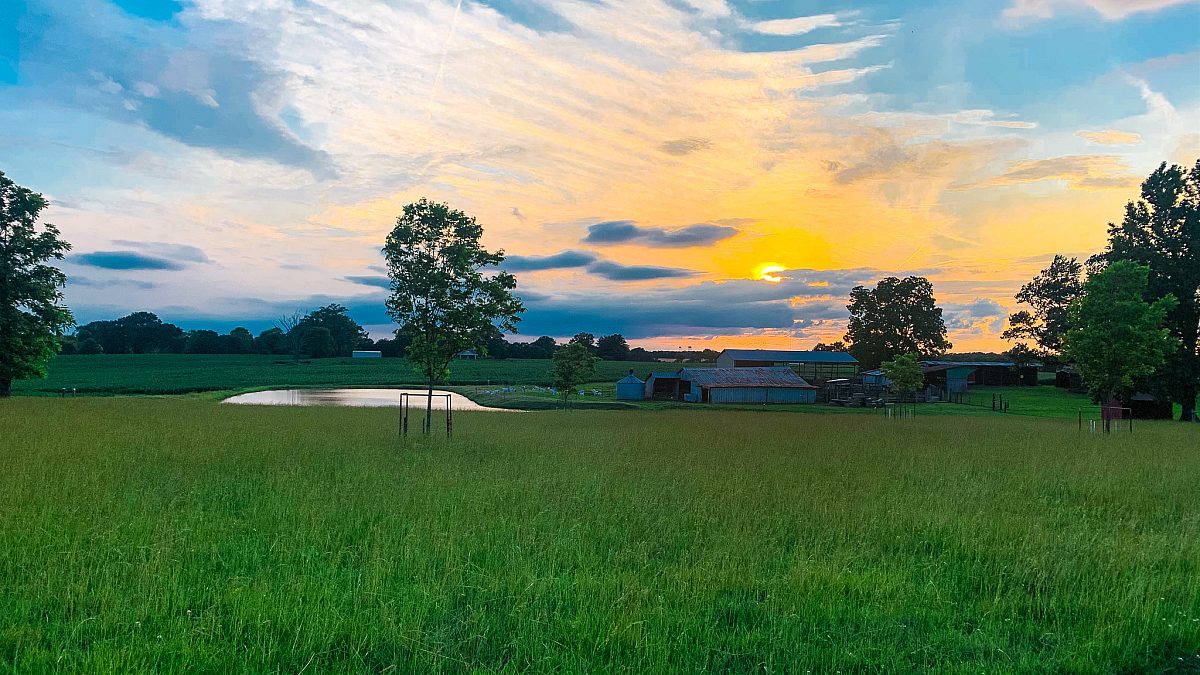My Yard Isn’t Organic and That’s OK
TOPICS
OrganicGuest Author
Special Contributor to FB.org

photo credit: AFBF Photo/Morgan Walker
Guest Author
Special Contributor to FB.org
By Teresa Bjork
I admit, our yard has gone wild since my husband and I became working parents.
The awful “Creeping Charlie” weed from our neighbor’s lawn is, yes, creeping into our lawn after the 2020 derecho knocked down the trees that separated our yards.
We also have weedy spots in the lawn where my husband, who likes to tinker with motors, has parked his boats and vehicles and killed the grass underneath.
And new this year, my neighbor is feeding corn to the squirrels. Now we have cornstalks popping up ALL. OVER. our yard.
However, I tried to make an effort this summer. I mulched and placed a layer of newspapers underneath the flower garden to keep weeds from sprouting.
Yet weeds still pop up through the cracks in the sidewalk. Tree seedlings grow along the sides of the house and garage. And did I mention, there’s so much corn! Growing in our yard! Everywhere!
Just like homeowners, farmers know that weeds can damage healthy crops and soil if left unchecked.
So, I decided enough is enough. Because I can’t hire a herd of goats to chew the weeds, I sprayed a pesticide.
As much as I would love to have a chemical-free yard, the reality is I don’t have a lot of options.
And it isn’t just about how my lawn looks. Weeds can damage our sidewalks and our home’s foundation and porches.
Just like homeowners, farmers know that weeds can damage healthy crops and soil if left unchecked.
Without crop protection products, U.S. farmers would lose an average of 52% of their corn crop and 49% of their soybean crop, according to the Weed Science Society of America.
Farmers work to control weeds year-round to prevent crop loss and to protect the environment. They use a variety of weed prevention strategies – including seed selection, precision agriculture technology and pesticides – to protect their crops.
Throughout the growing season, farmers work with agronomists to scout fields to detect any problems.
If pests start to threaten the crop, beyond what experts consider an economic threshold, then crop protection products may be necessary.
Farmers use application equipment with row shut-offs so they only apply as needed to specific sections in the field.
The newest precision technology also uses smart cameras and machine-learning to identify emerging weeds as the equipment moves through the fields, so applications are targeted only to the weeds.
When you see an applicator working a field, over 75% of what’s applied to the crop is actually water, experts say.
“We have a lot of (crop protection) products nowadays that we use only ounces per acre or fractions of an ounce per acre,” explains Meaghan Anderson, weed scientist and central Iowa field agronomist for Iowa State University Extension and Outreach.
In my own yard, I was cautious when applying pesticides. I followed the safety instructions on the label and only applied where needed.
Across the nation, farmers and their employees attend regular training and certification sessions to learn about proper pesticide handling and application.
Farmers are continually working to improve, learn and adopt new technology to grow healthy, safe crops while minimizing their environmental impact.
For more information on how to use pesticides safely in your home and garden, download this fact sheet from the Iowa State University Extension and Outreach store or contact your local Cooperative Extension Service office.
Teresa Bjork is consumer content manager at Iowa Farm Bureau. This column was originally published on the Iowa Farm Bureau Farm Fresh blog and is republished with permission.